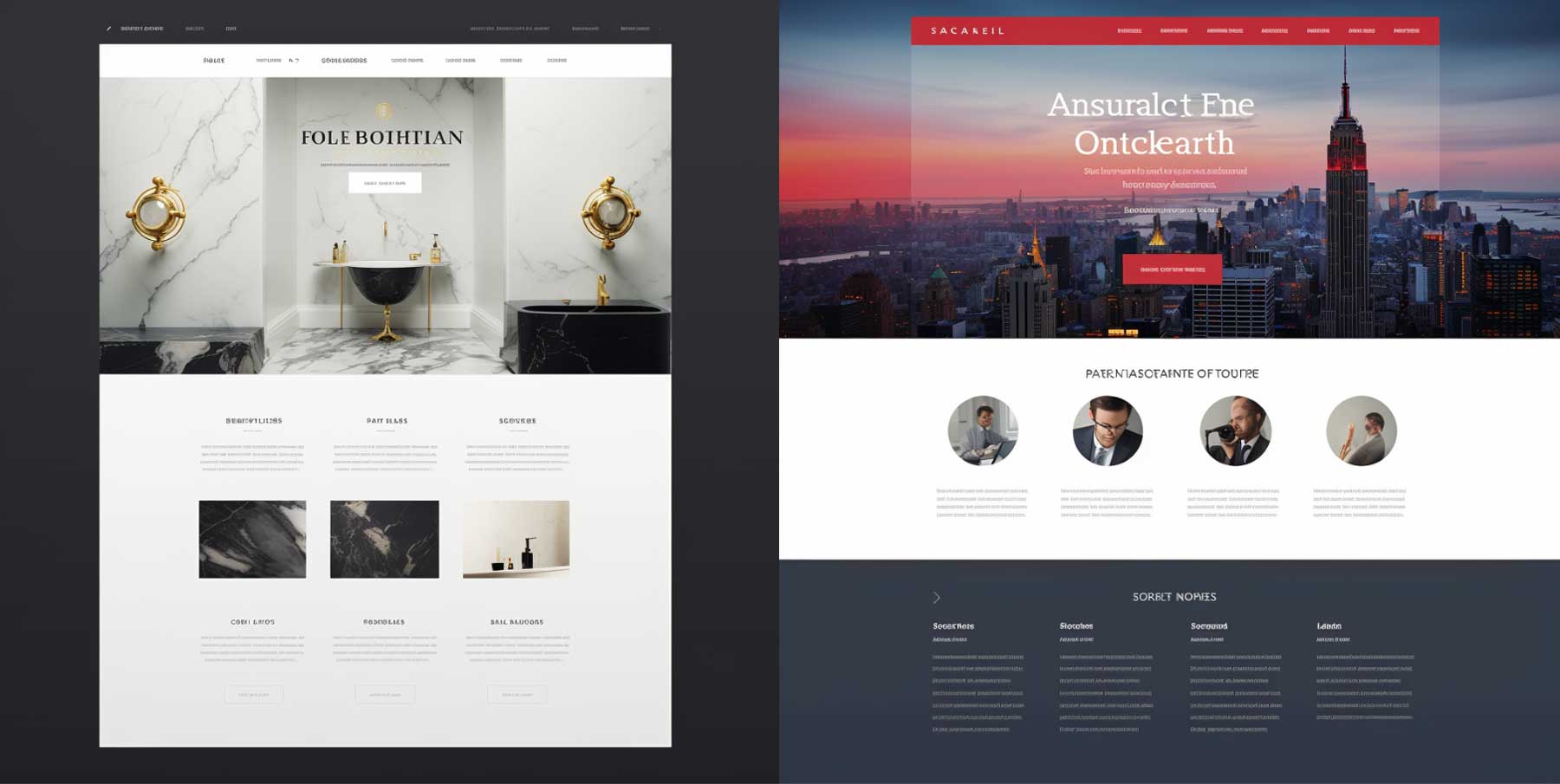Master the Art of Website Design With These Expert Tips and Tricks
In today's electronic age, having a visually attractive and properly designed web site is important for any organization or specific seeking to make a mark online. However, understanding the art of website design calls for even more than just an eye for aesthetic appeals. It involves a deep understanding of individual experience, performance, and the most current trends and methods. Just how can you raise your web layout abilities to the next degree? In this conversation, we will certainly discover experienced suggestions and tricks that will not just boost the visual charm of your site yet also enhance its use and efficiency. From selecting the right color combination to including effective call-to-actions, these insights will assist you produce a website that not only mesmerizes your audience yet also drives results.
Choosing the Right Color Combination
When picking a color scheme for internet layout, it is essential to consider aspects such as brand name identification, target audience, and total aesthetic objectives. The shades made use of in a site can significantly affect how individuals communicate and regard with the site.
In addition to brand name identification, the target market should likewise be taken into account when choosing a color combination. Various age and demographics may respond in a different way to certain colors. Younger audiences might be extra brought in to vibrant and vibrant colors, while older target markets might prefer a lot more low-key and innovative tones. Understanding the preferences and expectations of the target audience can aid develop a interesting and visually appealing site.
Finally, the general aesthetic goals of the website ought to be taken into consideration when selecting a shade palette. The color pattern ought to complement the overall style and design of the website, producing a aesthetically appealing and natural experience for individuals. Whether the objective is to create a relaxing and tranquil setting or an energetic and dynamic atmosphere, the color combination should be thoroughly chosen to accomplish the wanted aesthetic.

Creating Easy To Use Navigation
To enhance the customer experience, it is important to develop intuitive and easy-to-navigate menus for sites. Easy to use navigation is important for directing visitors with the numerous areas and pages of a site, allowing them to rapidly discover the content they are trying to find. When designing the navigation food selection, simplicity is key. Avoid littering the food selection with a lot of alternatives, as this can bewilder individuals and make it challenging for them to choose. Instead, focus on giving concise and clear labels for each menu thing, using acquainted terminology that users can conveniently understand.

Along with clear labels and rational organization, it is essential to make the navigation menu easily obtainable. Position it in a noticeable area, such as on top of the web page or in a set setting, to ensure that individuals can easily find and access it from anywhere on the website. Consider making use of a receptive article style method to guarantee that the navigating food selection continues to be available and usable on different devices, consisting of smart phones and tablets.
Including Responsive Design Strategies
In order to maximize web site functionality throughout different devices, including responsive style techniques is essential. Receptive design is a website design method that allows websites to adjust and respond to various display sizes and alignments. With the boosting usage of smart devices and tablets, it is crucial for internet developers to develop web sites that offer an optimum viewing experience for individuals on all devices.
Among the essential strategies in responsive style is using fluid grids. As opposed to developing fixed-width formats, web developers develop flexible grids that change and resize based upon the display size. This makes sure that the web content on the site stays readable and easily accessible, no check over here matter of the device being utilized.
An additional essential strategy is using flexible images and media. By setting the optimum size of images and videos to 100%, they will instantly reduce to fit smaller sized displays. This avoids images from being removed or distorted on smart phones.
In addition, responsive layout involves using media inquiries to apply various designs and formats based upon the tool's display dimension. This permits web designers to create a seamless experience by personalizing the presentation of web content according to the device being used.
Optimizing Site Speed and Performance
One important aspect of website design is optimizing site speed and performance. In today's busy digital world, users have little patience for slow-loading websites. A slow website can bring about an inadequate customer experience, high bounce rates, and reduced internet search engine positions. To make sure that your site carries out at its best, there are several approaches you can apply.
To start with, enhancing pictures is vital for improving internet site rate. Images need to be effectively pressed and resized to minimize their file dimension without sacrificing top quality. This can be done utilizing picture optimization tools or plugins.
An additional crucial factor to take into consideration is site caching. Caching involves saving static variations of website so that they can be quickly fetched rather than generating them from square one each time a user sees the site (Webwize SEO Company Tomball). This substantially reduces packing times and boosts overall performance
Minifying CSS and cool website designs JavaScript documents is another efficient strategy. Removing unnecessary whitespace, remarks, and reducing code complexity can significantly enhance internet site speed.
Executing Efficient Call-to-Actions
Developing influential and engaging call-to-actions is an important facet of reliable web style. A call-to-action (CTA) is a timely or instruction that urges customers to take a particular action on an internet site, such as purchasing, registering for a newsletter, or calling the firm. Applying effective CTAs can considerably enhance customer involvement and conversion prices.
To develop engaging CTAs, it is vital to use clear and concise language that conveys the value proposition and benefits of taking the preferred action. The CTA ought to be visually popular on the page, utilizing contrasting design and colors components that draw the user's focus. Furthermore, making use of activity verbs and developing a feeling of urgency can even more improve the performance of the CTA.
In addition, it is vital to position the CTA tactically on the web page. Positioning it above the fold, where it is quickly visible to individuals without needing to scroll, can substantially enhance its visibility and click-through rates. It is likewise useful to test different variations of CTAs to establish which ones reverberate ideal with individuals and drive the greatest conversion prices.
Final Thought
Finally, mastering the art of website design needs attention to numerous aspects such as shade combination choice, easy to use navigating, responsive design methods, website rate optimization, and efficient call-to-actions. By executing these specialist ideas and tricks, internet developers can produce visually enticing and functional websites that improve individual experience and drive preferred actions.
The colors made use of in a site can greatly affect just how individuals connect and perceive with the site.In order to maximize site performance throughout various gadgets, including responsive design methods is important. Receptive layout is a web design technique that allows internet sites to adapt and respond to various display dimensions and orientations. With the enhancing usage of smart devices and tablets, it is essential for internet developers to develop websites that offer an ideal watching experience for customers on all devices.
